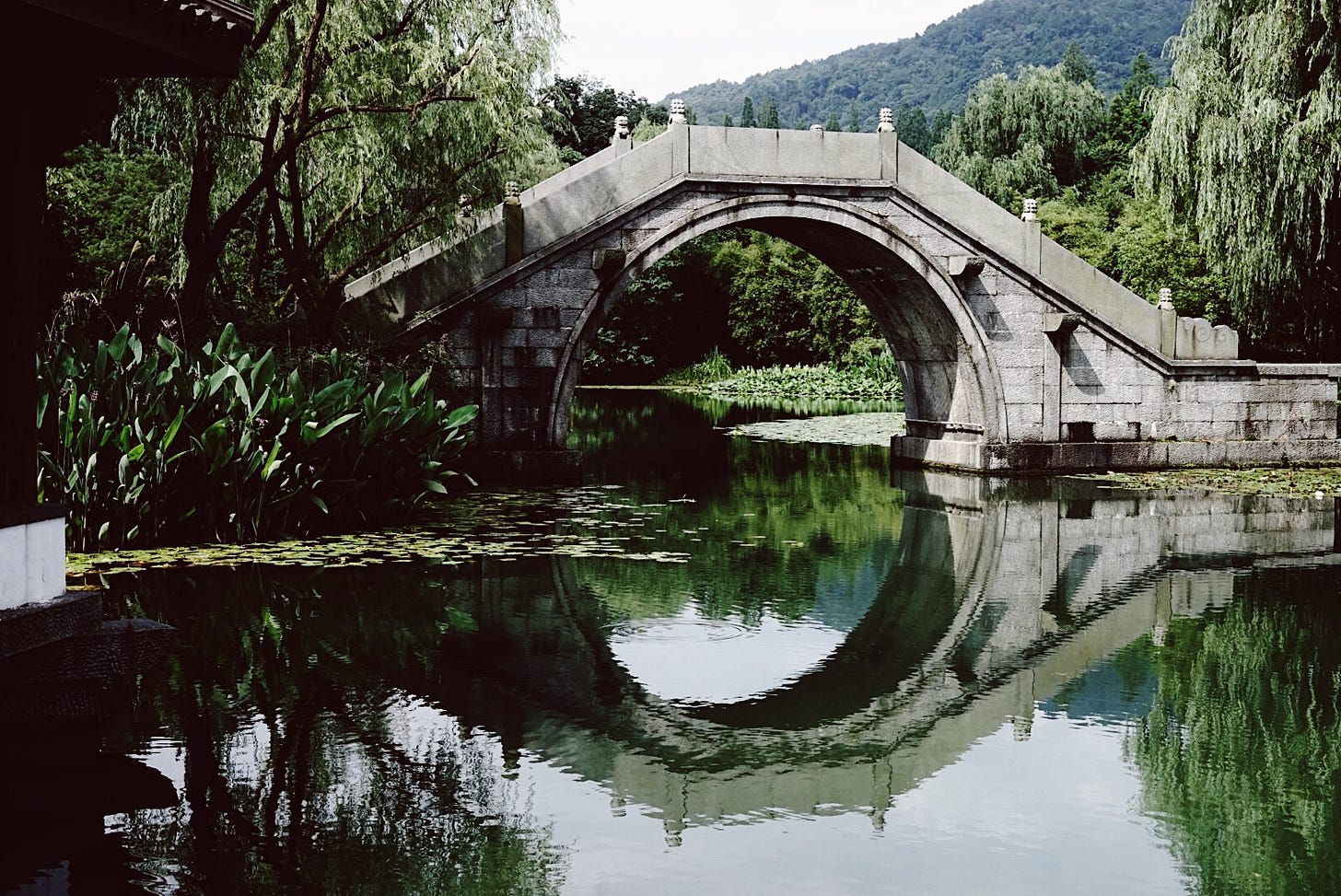Dao De Jing Chapter 77: Stringing Our Bow
Be tense but stable, holding great energy but in no hurry to release
This is a very Buddhist substack, but recently I’ve been gaining a lot of inspiration from rereading and retranslating the classic of Daoist philosophy, the Dao De Jing. Laozi wrote these words well over two millennia ago, yet so much is still relevant to the present.
天之道,其猶張弓與?高者抑之,下者舉之;有餘者損之,不足者補之。天之道,損有餘而補不足。人之道,則不然,損不足以奉有餘。孰能有餘以奉天下?唯有道者。是以聖人為而不恃,功成而不處,其不欲見賢。
And how the Way of Nature resembles stringing a bow! Bend down what starts high, raise up what starts low. Trim when there is slack and add when the string is stretched thin.
The Way of Nature trims the slack and adds to the thin. How unlike the Way of Man, which trims the thin to give to those with slack.
Who might use their own slack to give to the entire world? Only one who walks the Way.
Therefore sages act without hubris and achieve without resting on laurels, because they do not desire acclaim for their virtues.

Yeah yeah, I said in my intro post that in the sudden approach to practice, you pick up your bow and shoot your shot. But of course, the bow needs to be strung. The string needs to be taut. Or that arrow isn’t going very far.
In most cases, we’re looking to keep our bow in a happy medium state. Anyone who’s played a string instrument will know that a slack string can’t produce a clear, bright tone. And an over-tight string is liable to snap. Many things in life are like this.
Most commentators reading this chapter tend to take the bow here as a metaphor for political or economic action. Nothing wrong with that. But here at No Dust, I’m not interested in playing with concepts. We are the bow, here and now. We keep our finely tuned balance so we’re ready for whatever comes.
One thing like Laozi’s bow is the body. When one of my muscles hurts, I need to first see if it’s locked tight or stretched thin. Tight muscles need stretching, strained muscles need massage. Stretching a muscle that’s already overstretched won’t fix anything.
The same is true of the state of our mind. When the mind is racing, it needs complicated and shallow meditation methods. For me, when I’m agitated, I often have to count my breaths or engage in physical activity like slow walking to slowly bring the mind down and in.
When I’m agitated, a method like watching the breath or experiencing physical sensations is often too subtle. As I struggle to focus, I generally end up more agitated than I began. Only when the mind calms down, do I sometimes switch to finer and finer methods.
In daily life, I tend to use relatively coarse methods to refocus the mind. If I’m taking a pause and standing still, I can sometimes return to the breath. More often, no matter whether I’m walking, sitting, or standing, I can find the physical sensation of my feet touching the ground or the air on my skin.
When things get messy inside, then it’s time to observe the pain or discomfort. Sometimes if I’m scared or very perturbed, I’ll recite a particular mantra to anchor myself on something very concrete and specific.1
If things get really unsettled, it might be the time to do some full-body movement. (In retreats, we do slow prostrations over and over again, as a way to focus the mind.) Putting my entire body into the motions pulls the mind back to sensations and out of wherever it flew off to.
When mind and body are stretched to optimal tightness, they have a lot of energy and power. It’s tempting to want to distract the mind when I feel unsettled or overstimulated, but it’s at these times that I need stability more than anything else. At the other extreme, if I’m feeling lethargic and sleepy, resting may just send me deeper into dissociative torpor.
When I’m in good condition, I have excess bandwidth to help others. That’s the ideal state, no?
But of course I can’t get too infatuated with how wonderfully relaxed and powerful I am and how helpful I can be to others. Self-centered views of the world result in self-centered actions.
A well-strung bow is tense but stable. Holding great energy but not in a hurry to release. That’s how I want to be in every moment.
For me, mantras function primarily as a stabilizing device for the mind, not so much as a means of devotion or a call for help. (Though an ask for support is a perfectly reasonable hope when chanting the name of Avalokiteśvara, Amitābha, or another bodhisattva.)

This is a wonderful meditation on Chapter 77. The lovely, shimmery photo of Hangzhou is gorgeous.
Interpreting the Daodejing as a commentary on politics and governance is pretty much a Han-centric view, based on Wang Bi's version of the DDJ. Your interpretation, "We are the bow, here and now. We keep our finely tuned balance so we’re ready for whatever comes." is in agreeance with Heshanggong's commentary.
天道暗昧,举物类以为喻也 The Way of Heaven is obscure, and I use the categories of things as an analogy.
言张弓和调之,如是乃可用耳 It means that the bow is drawn in harmony and it can be used.
(from the Ctext database and translation) (of course, Heshanggong has a lot more to say on Ch 77 but he begins with explaining - as you have - that the bow is an analogy)
While the DDJ is open to a myriad of interpretations, I love your accounting of 'being the bow', stable, with great energy, awaiting the right time for release. 🙏